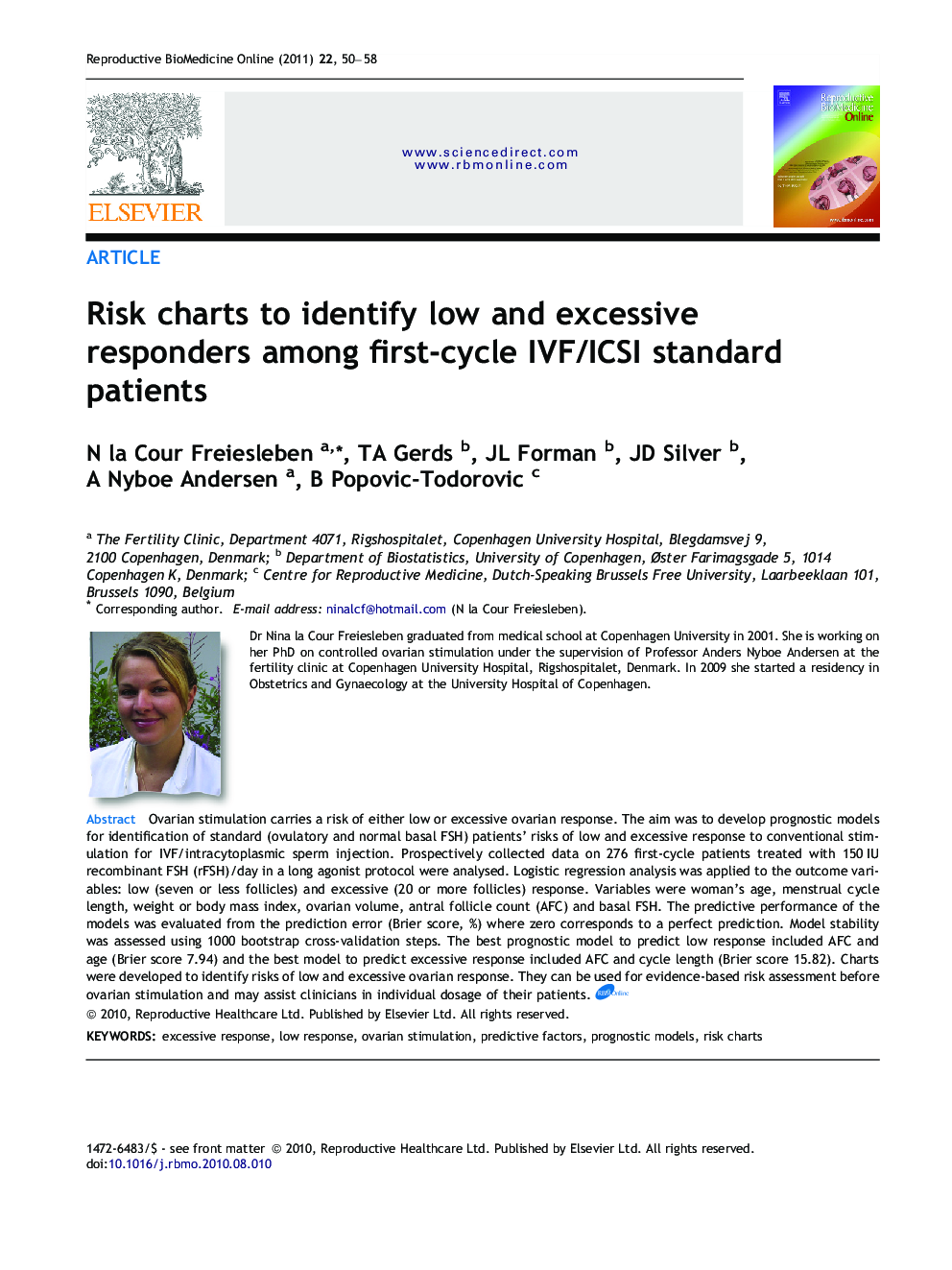| Article ID | Journal | Published Year | Pages | File Type |
|---|---|---|---|---|
| 3971809 | Reproductive BioMedicine Online | 2011 | 9 Pages |
Ovarian stimulation carries a risk of either low or excessive ovarian response. The aim was to develop prognostic models for identification of standard (ovulatory and normal basal FSH) patients’ risks of low and excessive response to conventional stimulation for IVF/intracytoplasmic sperm injection. Prospectively collected data on 276 first-cycle patients treated with 150 IU recombinant FSH (rFSH)/day in a long agonist protocol were analysed. Logistic regression analysis was applied to the outcome variables: low (seven or less follicles) and excessive (20 or more follicles) response. Variables were woman’s age, menstrual cycle length, weight or body mass index, ovarian volume, antral follicle count (AFC) and basal FSH. The predictive performance of the models was evaluated from the prediction error (Brier score, %) where zero corresponds to a perfect prediction. Model stability was assessed using 1000 bootstrap cross-validation steps. The best prognostic model to predict low response included AFC and age (Brier score 7.94) and the best model to predict excessive response included AFC and cycle length (Brier score 15.82). Charts were developed to identify risks of low and excessive ovarian response. They can be used for evidence-based risk assessment before ovarian stimulation and may assist clinicians in individual dosage of their patients.In conventional ovarian stimulation for IVF, it is well known that even in ‘standard’ patients (regular menstrual cycle and normal basal FSH), the first treatment cycle exposes patients to the risk of a low or excessive ovarian response because it is not known in advance how the patient will respond to the medicine (recombinant FSH). The ovarian response is dose-related but the response variability is high. Knowing a patient’s risk of low and excessive ovarian response may assist clinicians in determining an individual dose of recombinant FSH, which in turn may decrease the rate of cycle cancellations, increase pregnancy rates and reduce side effects of excessive ovarian response, such as ovarian hyperstimulation syndrome. This analysis is based on prospectively collected data from 276 first-cycle patients treated in the long agonist protocol. The objective was to develop prognostic models for identification of first-cycle ‘standard’ patients’ risks of low and excessive ovarian responses to a ‘standard’ dose of 150 IU recombinant FSH/day. Variables investigated were woman’s age, menstrual cycle length, body weight, ovarian volume, antral follicle count (AFC; egg bladders) and basal FSH. The best prognostic model to predict low response included AFC and age whereas the best model to predict excessive response included AFC and cycle length. Prognostic models of the ovarian response were developed, and they may assist clinicians in risk assessment and individual dosing before ovarian stimulation is initiated.
